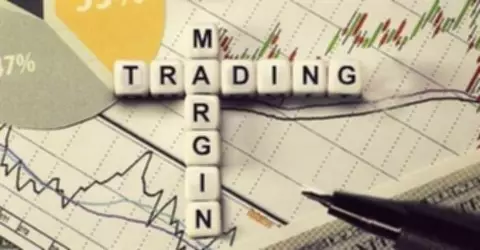The Basics of Margin Trading with Cryptocurrency
The cryptocurrency industry is actively developing and becoming more like traditional markets. Just a few years ago, the concept of margin trading was associated only with the classical securities market. Now, margin trading has become an integral part of the cryptocurrency industry. In this article, we will figure out how it works and what risks it carries.

What is margin trading?
Margin trading is a method of carrying out trading transactions with cryptocurrency assets that a trader borrows from a cryptocurrency exchange. Popular cryptocurrencies for margin trading include the following:
- Bitcoin (BTC)
- Ethereum (ETH)
- Beaxy (BXY)
- Litecoin (LTC)
- Ethereum Classic (ETC)
- Monero (XMR)
- ZCash (ZEC)
- NEO (NEO)
- Ripple (XRP)
- EOS (EOS)
- Waves (WAVES)
- Dash (DASH)
- USD Coin (USDC)
At the same time, the trader will have to provide some kind of pledge (margin) and pay interest for using much higher volumes of assets in transactions than those that s/he actually has.
What are the benefits and risks of cryptocurrency margin trading?
The main advantage of margin trading is the ability to trade borrowed funds and significantly increase profit potential. This is the standard for the exchange industry for decades. Indeed, in traditional markets, margin trading has flourished for a long time.
For instance, in the US market alone, the total leverage was $568 billion in January 2019, according to FINRA. The amount is considerable. For comparison, the capitalization of the entire cryptocurrency market as of June 1 was at the level of $270 billion.
The problem is that margin trading is a high-risk instrument. A feature of margin trading is the so-called leverage. It is important to understand that the more leverage, the greater the potential profit from the transaction and the possible loss. If something does not go according to plan, leverage will bring losses instead of large profits.
The main risk of margin trading is the probability of quickly losing your own deposit, improperly managing risks and capital. It is also important to consider the increased volatility of cryptocurrency markets, which is fraught with additional risks for margin trading. Therefore, this type of trading is best used by professionals who know what they are doing

Margin trading: How to reduce risks
In order to reduce the number of problems that most newcomers often encounter, you need to:
- Study margin trading strategies and all its fundamental features;
- Read reviews about the exchange on which you plan to trade;
- Get comfortable with the functionality of the exchange;
- Initially, try the smallest available leverage;
- Use proved standard strategies with further study of more advanced ones;
- Try to eliminate the emotional factor and think through deals as much as possible;
- Distribute assets and not trade just one instrument.